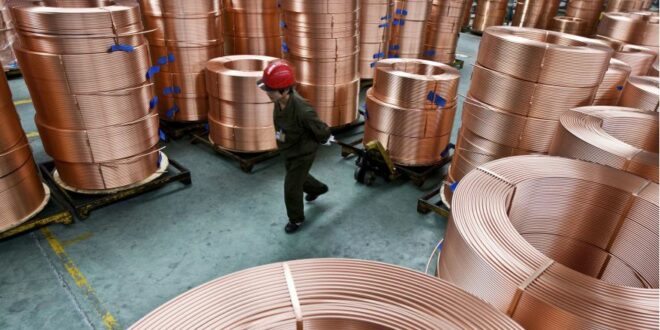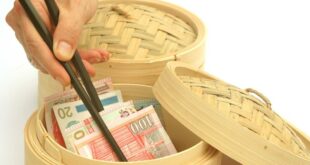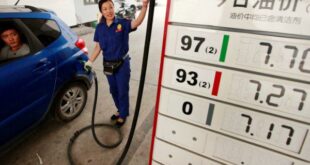in hits near-4-month peak; lead at highest since June
* China copper imports up 8.1 pct at 410,680 T
* Euro rises against dollar
* U.S. weekly jobless claims edge up, but still at low levels
By Harpreet Bhal and Eric Onstad
LONDON, Aug 8 (Reuters) – Copper hit its highest in almost two months on Thursday as upbeat trade data and better-than-expected imports of the metal in top consumer China reinforced hopes of a revival in demand for industrial materials.
A broad-based move that saw many short position holders buying back positions swept other industrial metals higher, with lead also touching the highest levels in nearly two months and tin surging to a near-four-month peak.
Surprisingly firm rebounds in China’s exports and imports in July offered some hope that the world’s second-largest economy might be stabilising after more than two years of slowing growth.
Three-month copper on the London Metal Exchange surged 2.9 percent to $7,208.25 by 1425 GMT, its strongest since June 11.
“The data supports our positive view that the period of destocking in China is over and we forecast an improvement in metals demand and also a stabilisation of growth in China over the coming months,” said Eugen Weinberg, analyst at Commerzbank.
“Sentiment was also very downbeat in the market and the data has triggered some short-covering.”
China is the world’s largest copper consumer, accounting for around 40 percent of global refined demand.
Data showed China’s imports of copper rose 8.1 percent to 410,680 tonnes in July from 379,951 tonnes in the previous month.
Some analysts said that although the figures from China were positive, a seasonally slower month for demand could prevent sustained gains for the metal in the short term.
“Markets are near record shorts in copper so after positive news in China’s trade data, we could see copper prices finally break out from the recent trading range, but I don’t think it will be sustained,” Natalie Rampono at ANZ in Melbourne said.
“We’re in the seasonally slower months for demand, so we’re still expecting a bit of near-term weakness,” she said, adding markets may well be preempting the expected seasonal fourth-quarter recovery in demand.
ALUMINIUM CUTBACKS
Markets appeared to welcome U.S. data, which showed that although the number of Americans filing new claims for jobless benefits rose slightly last week, it was still near its lowest level since before the 2007-09 recession.
Dollar weakness helped support gains in metals. The euro rose after above-forecast German trade surplus and Wednesday’s better-than-expected German factory data.
A weak dollar makes commodities priced in the U.S. unit cheaper for holders of other currencies.
In industry news, mining group Rio Tinto has scrapped efforts to sell its loss-making Pacific Aluminium business, blaming poor market conditions as weaker iron ore, copper and coal prices dragged first-half profit down 18 percent.
Rio also said that it will shut down its aluminium smelter in Shawinigan, Quebec, by the end of November.
“Indeed, the sustained period of weak aluminium prices and chronic oversupply, particularly in China, has forced producers to cut output with Chinese production curtailments accelerating in June-July,” analyst Wiktor Bielski at VTB Capital said.
“However, most of the cuts in China are designated as temporary cuts, indicating they could resume operations when prices improve,” he added in a note.
Aluminium, zinc and nickel hit the highest levels in two weeks, with aluminium gaining 2.2 percent to $1,837 a tonne, zinc adding 2.2 percent to $1,889 and nickel climbing 2.3 percent to $14,300.
Tin, which has been the strongest performer so far this year among major LME metals, raced 2.2 percent higher to $21,750 a tonne, the highest since April 15.
Lead added 1.4 percent to $2,135.75 a tonne after hitting a session peak of $2,142, the highest since June 12.
 Asia Finance News Asia finance news, banking, market analysis, business, Forex, trade, Cryptocurrency as it is happening in Asia. Trusted gateway for Asian financial news.
Asia Finance News Asia finance news, banking, market analysis, business, Forex, trade, Cryptocurrency as it is happening in Asia. Trusted gateway for Asian financial news.





